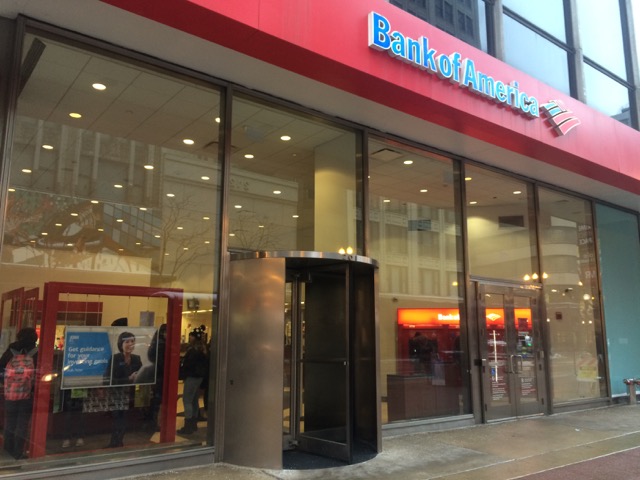By Katie Murar
For the first time ever, mobile banking exceeded physical banking in 2015, according to information gathered from over 3,100 U.S. consumers over five years by Javelin Strategy & Research, an entity of Connecticut financial-industry research firm Greenwich Associates LLC.
The survey asked individuals whether they had done online-banking in the past week, which could include any transaction from checking an account balance to depositing a check via their mobile device.
The report, called 2015 Mobile Banking, Smartphone and Tablet Forecast, found that 1 in 10 U.S. adults began using mobile banking for the very first time last year, amounting to 25 million new mobile bankers.

Javelin forecasts 81 percent of of U.S. adults will use mobile banking by 2020, begging the question: are physical banks becoming obsolete?
First Bank & Trust doesn’t seem to think so. The Chicago bank is opening a new branch in Summer 2016 in Evanston, featuring a “state of the art open floor plan,” according to a press release.
Paul Kogol, senior vice president of retail banking for First Bank & Trust, sees the new branch as a space “completely dedicated to our customers and the community.”
“As more and more banking transactions are being done online, bank branches need to evolve to satisfy customer needs,” Kogol said in the press release. “When people come into the bank they should feel a connection with their banker. The idea is to remove the barriers and offer our customers bankers who can act as advisors.”
In an interview, Kogol said every customer has different needs, and physical locations are still used by many people, though not as many as in previous years. According to a new SNL Financial LLC report, 1,614 branches closed in 2015, continuing a years-long trend.
“Our new branch location is a different market of Evanston, and we’re right by the CTA so we’re really excited to get the chance to attract a lot of new customers, both consumer and business.” Kogol said.
Terry Griffin, vice president for the Chicago area of the Community Bankers Association of Illinois, said brick and mortar banks are especially important to community banks, as their main customers are small businesses.
“If a small business comes in to a new line of credit they’re going to want to come into the physical branch, they’re going to want to speak to someone in person,” Griffin said. “When it comes down to it, community banking is all about relationship banking, which is a huge differentiating factor from larger banks.”
The association represents over 350 community banks, most of which provide online banking resources in addition to one or two physical locations. Griffin says community banks provide online banking resources to keep up with customers needs, and to keep up with technology.
“A community bank can’t just offer one mode of banking, they have to offer every financial service,” Griffin said. “They’re definitely not the pioneers of technology, but once a technology has proven itself, it’s worth utilizing.”


